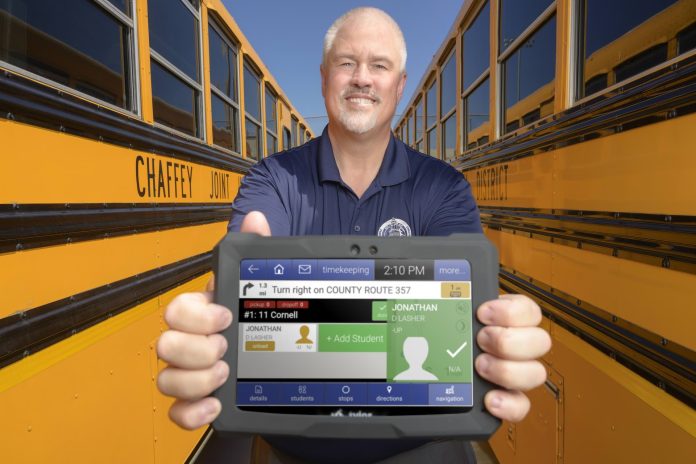With the nationwide driver shortage, many districts have had to consolidate their runs in order to maintain their level of service. In discussion with transportation leaders, a key element was brought up repeatedly: detailed student ridership data.
With fewer veteran drivers available to provide data for each child on their route, or many different drivers taking routes as needed, operations managers routinely highlighted the importance of capturing true ridership data without relying on human memory. Without it, route consolidation or elimination is based on what is expected to happen on paper — not what really happens day-to-day.
Below, the student transportation team from Tyler Technologies has provided information about some of the key types of student ridership technology in use in the industry, describing how various features and functions can work for different operations.
These tools offer multiple ways for the industry to tackle the need for this data, not only to manage the here and now, but to build a historical record of data ready for decision-makers to turn to when changes are needed in the future.
Complete Solutions with On-board Tablets
Tablets have taken the K-12 transportation industry by storm in recent years, featuring functionality from inspection management to child-check to timekeeping. While on-board tablets such as Tyler Technologies’ Tyler Drive tablet are mainly known for providing turn-by-turn directions to drivers, the importance of their use for student ridership should not be overlooked.
The Tyler Drive tablet is fully integrated with Tyler’s student transportation routing and management software, ensuring that information on routes, stops, and students are always in sync. Student photos imported from the district’s student information solution help drivers identify planned riders, with the student assigned to a stop appearing on screen as the bus arrives at their location.
Riders can be checked in manually by the driver or by having a student scan an ID card. If an unplanned rider boards the bus, a message alerts the driver who can either confirm ridership or inform the driver of the appropriate route or vehicle for the student.
When needed, for example for student riders with special needs, the tablet can assist in the collection of driver and aide signatures as well as track other pertinent information with the use of the tablet’s custom fields.
This check-in is key to the data collection process used by district decision-makers: not only will the district know who rode – planned or unplanned – but where and when each student boarded or disembarked the bus. This provides a complete and accurate picture of how planned routes are working, and where changes might be made.
Transportation Director Brice Sunderland of Chaffey Joint Union High School District in California also discussed how tablets provide benefits beyond data collection.
“[The technology] gives us the ability to adapt on the fly and it eases the mind of any driver covering another route that they may be unfamiliar with. The tablet gives them turn-by-turn directions and tells them which students to pick up with pictures for all,” he explained.
He and others using this technology have discussed that this in-the-moment information for new drivers can be a key recruitment and retention tool.
Multifunctional Telematic GPS
While the right tablets provide the most complete ridership solution, districts may look to first implement or upgrade a previously known solution such as GPS, and may not realize this technology provides its own ridership data collection options. Telematic GPS from Tyler Technologies connects to the engine of a vehicle to provide diagnostic and Automatic Vehicle Location (AVL) data.
When combined with a scan card reader, the device becomes a ridership solution with the ability to track scan data alongside vehicle GPS locations, providing the key data needed to see where students boarded and disembarked each day, or to collect the bank of data that is so key to accurate and effective decision-making on a broad scale.
Transparency in Ridership
Ridership data doesn’t just benefit a district; it can of course bring daily benefit to parents and guardians. Combining a ridership solution with parent communication apps – such as the My Ride K-12 app which is part of Tyler’s Student Transportation software – can provide a sense of security to parents who can know with certainty that their student got on the bus and to school or home safely.
With less time spent answering ringing phones from parents, district leaders can spend time focusing on what they do best: keeping dollars in the classroom while providing each student with a safe, timely way to get the education they deserve.
To learn more about Tyler Drive and other ridership solutions from Tyler Technologies, visit tylertech.com.
















